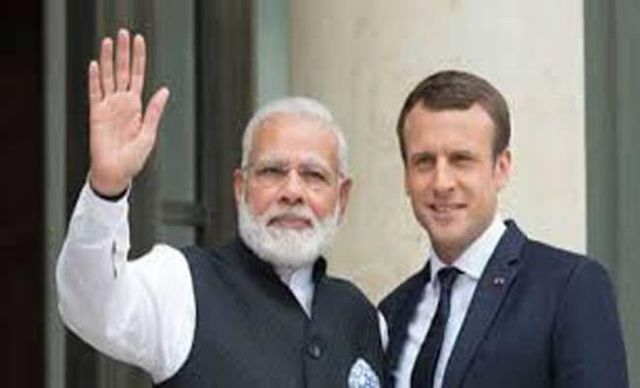
by admin | May 25, 2021 | Opinions
 By Rajendra Shende,
By Rajendra Shende,
Narendra Modi, Prime Minister of the world’s fastest-growing economy, and Emmanuel Macron, President of the world’s most aggressive climate change saviour, have a rendezvous starting from March 9 in New Delhi.
They truly represent the strongest redeemers of the world’s most formidable challenges of today — climate change, terrorism and inequality. And no one knows more than these two leaders that combating these three enemies would require tremendous political will and resources. That is because confronting them is not an exercise of three separate encounters on three fronts. They are interlinked and complex clusters. Climate change is aggravating inequality that drives terrorism — creating a vicious spiral of storms.
The good news is that the two leaders are compatible and likeminded. Macron is a great listener and keen to learn from elders like Modi. And Modi is a staunch believer that young leaders like Macron would be tomorrow’s stewards to steer the world in the right direction in the milieu of a political quagmire. Modi is innovative and Macron is inventive.
That combination of attributes of these two leaders is giving shape to one of the path-breaking projects that has emerged from Modi’s brave innovative initiative — the International Solar Alliance (ISA) .
With 1,000 GW of solar installations targeted globally by 2030 with proposed funds of $1 trillion, the basic concept of the alliance is to pool together international collaboration for research, technology, best practices and standards on solar energy, including improving solar cell efficiency, material research and policies. ISA entered into force on December 6, 2017, after 15 countries ratified it. ISA heralds a new era of partnerships and collective actions to combat the effects of climate change, reduce dependence on fossil fuels and reduce air pollution.
The region between the Tropics of Cancer and Capricorn — to which the ISA is confined — is really the “sunshine belt” around the Earth. The countries in this belt receive the most solar energy among the 196 countries in the world. Modi has scored over a strategic and diplomatic tactic of China’s President Xi Jinping, who has almost concurrently flagged the OBOR — One Belt One Road initiative. The ISA, a real belt of 121 countries, stands out in comparison with the OBOR initiative (now renamed Belt and Road Initiative, or BRI) on two counts.
Firstly, the BRI is aimed at enhancing connectivity for a quantum jump in trade, mainly between China and 68 other countries, without specific acknowledgement of the environmental impact of such a jump. The ISA aims at sustainable development of the 121 countries in the tropical belt. Then, the BRI is viewed by many as a project led by one country with its hidden interests. The ISA is a bilateral initiative of India and France that has now transformed into an inter-governmental treaty with voting mandates, leveraging the principles of the United Nations. Clearly, it is a wider and honest effort towards sustainable development.
Nature indeed plays a great balancer. Rich countries, mainly outside the belt of the Tropics, are replete with finance and weapon power whereas ISA countries are endowed with bright sunlight. The economic revolution in the oil-rich countries in the 1970s is likely to be repeated in the sun-rich countries — this time without any climate change impact. In fact, ISA would be the correction factor to the climatic damage done by OPEC countries.
Any country in the world, even outside the tropical belt, can join the ISA, except that those lying outside the Tropics would not have voting rights. Thus, France and recently joined Australia would not be voting. It is great experiment of a real multi-lateral treaty resulting from bilateral ingenuity.
The timing of the official launch of the initiative cannot be better. The prices of electricity from solar energy are reaching parity with the electricity produced by fossil fuels. The latest report from the International Energy Agency (IEA) shows that the global investment in renewable energy over the last three years is more than that in fossil fuels. The employment generated in the renewable energy sector is more than in that of fossil fuels. Some experts say that increasing and intensifying trade wars and anti-dumping appeals on solar panels around the world are signs that trade in solar panels is “pole-vaulting”.
Clearly, the Modi-Macron mega moment has arrived.
The impending risk, however, is that unrelated political debates and military deals are likely to overshadow this aspiring global initiative. Numbers like three additional Scorpene submarines and 36 Rafale fighters are likely to take over, particularly in India’s argumentative and democratic media.
Yet another risk is the usual pitfalls of inter-governmental process well-known in the United Nations arena. Each of the 121 countries has one vote but also a stand-alone opinion. That may delay the decisions on joint research on solar cell efficiencies and storage technologies as well as allotment of funding for various projects.
It is important to recognise that there are a number of the Sustainable Development Goals (SDGs) that ISA can achieve. Its contribution to energy for all and climate change and eradicating poverty would be significant.
The key to success, however, is linking ISA to the common man at the bottom of the pyramid. What is more relevant for India is not to push ISA to meet its own pledges at the Paris climate agreement or its own renewable energy targets of 175 GW, but to anchor its efforts to mainstream solar and wind energy into all strata of society.
Emphasis on using solar power not only in the building sector but also in sectors that are socially important like agriculture, health, SMEs, IT industry and university campuses should be the key. It is important that ISA not only targets the funding and gigawatt targets but takes the targets to rural areas through solar vaccine coolers, solar vegetable cold storages, solar schools and solar colleges.
India and France should also set up an example by encouraging solar cell and panel manufacturing in the Tropical Belt countries and supporting the fair and just practices in trade in products related to solar energy.
It will not be an exaggeration to state that ISA, if it works smoothly and shows promise, can be a well deserving candidate for the Nobel Peace Prize.
(Rajendra Shende is Chairman, TERRE Policy Centre, a former UNEP Director and IIT Alumnus. The views expressed are personal. He can be contacted at shende.rajendra@gmail.com)
—IANS
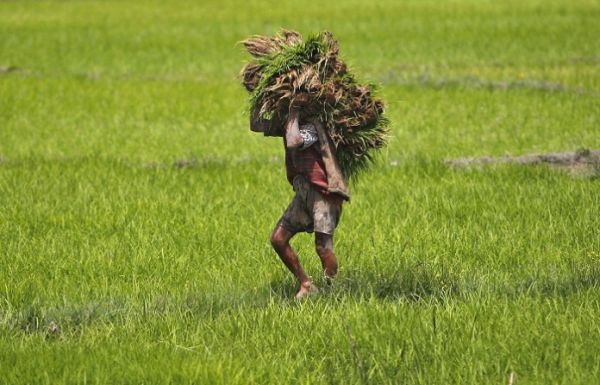
by admin | May 25, 2021 | Corporate, Corporate finance, Corporate Governance
 New Delhi : The Cabinet Committee on Economic Affairs, chaired by Prime Minister Narendra Modi, on Wednesday approved promotion of agricultural mechanisation for in-situ management of crop residue in Punjab, Haryana and Uttar Pradesh and NCT of Delhi to address air pollution in the national capital.
New Delhi : The Cabinet Committee on Economic Affairs, chaired by Prime Minister Narendra Modi, on Wednesday approved promotion of agricultural mechanisation for in-situ management of crop residue in Punjab, Haryana and Uttar Pradesh and NCT of Delhi to address air pollution in the national capital.
A new central sector scheme was proposed in this Union Budget to address air pollution with total outlay of Rs 1,151.80 crore.
Establishment of farm machinery banks for custom hiring of in-situ crop residue management machinery and financial assistance to the farmers for procurement of such machinery are major components of the scheme.
Also, mass awareness campaigns will be undertaken along with capacity building programme, advertisement in print media, star campaigning, award for village and gram panchayat for achieving zero straw burning.
—IANS
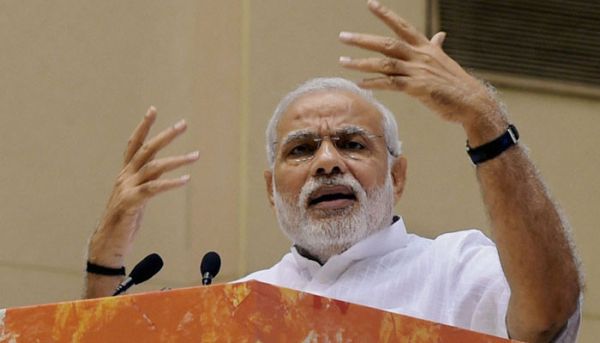
by admin | May 25, 2021 | News, Politics
 New Delhi : Prime Minister Narendra Modi on Saturday paused his speech for Azaan during his visit to the new BJP central office after party’s stunning victory in Tripura.
New Delhi : Prime Minister Narendra Modi on Saturday paused his speech for Azaan during his visit to the new BJP central office after party’s stunning victory in Tripura.
Soon after he began his speech, Modi told the gathering of enthusiastic party workers that he was pausing for ‘azaan’, the Muslim call to the faithful for prayer, audible from a mosque. He resumed his speech later with slogans of “Bharat Mata ki Jai.”
Modi also asked the assembled gathering to observe silence in memory of party workers who had lost their lives in political violence in Tripura and other Left-ruled states.
“Many workers have laid down their lives. Only due to their ideology, our innocent workers have been killed. But the poorest of poor and illeterate have given answer to that with their vote,” Modi said.
While the BJP scored an emphatic victory in Tripura, it improved its performance in Nagaland and Meghalaya.
—IANS
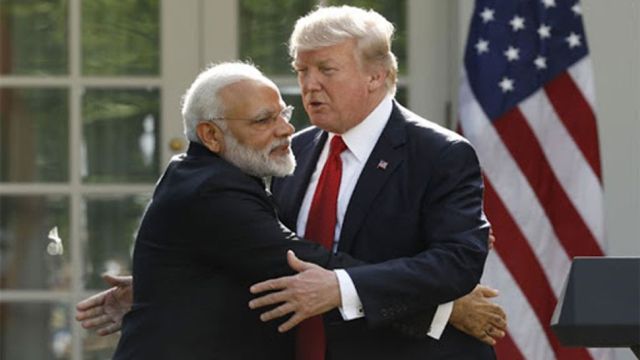
by admin | May 25, 2021 | Opinions
 By T.P. Sreenivasan,
By T.P. Sreenivasan,
Prime Minister Narendra Modi’s worldwide travels, which appeared to lag a little with the advent of President Donald Trump and his own domestic troubles, resumed with a bang with visits to four Islamic countries in four days in February. For a person of the Prime Minister’s reputation and record, this was revolutionary. No other single journey of his as Prime Minister was so rich in symbolism and practical wisdom.
The sight of Modi travelling in a Jordanian helicopter to Palestine, with an Israeli air escort, was called “history in the making” by the usually reticent spokesman of the Ministry of External Affairs. His visit to Ramallah took place just weeks after the triumphant visit to India by Israeli Prime Minister Benjamin Netanyahu which was, by his own admission, part of his quest for political power by winning strong friends.
Although the speech Modi made in Ramallah fell short of restating the traditional Indian position that Israel should withdraw to its 1967 borders and East Jerusalem should be the capital of Palestine, his words in support of an independent Palestine state were categorical enough to deserve the highest Palestinian honour conferred upon him.
The real significance of the visit is that it happened at a time when all of West Asia is volatile. Not to be deterred by the advice of caution, Modi took the bull by the horns, creating speculation that he could play the role of regional peacemaker instead of Trump, who has burnt his boats with the Arab world by declaring Jerusalem as Israel’s capital. But the US President still holds the key to negotiations his son-in-law Jared Kushner is pursuing in collaboration with Saudi Arabia, clearly in Israel’s interests.
The present configuration of relations in West Asia does not permit a fair peace process. But India even being considered for a possible role is significant in itself, as it recognises New Delhi’s balanced and realistic position on Palestine.
Modi’s visit to the UAE had special significance in more ways than one. According to a political analyst, “The last three years of political engagement between the UAE and India has resulted in an upswing of multi-dimensional strategic collaboration. If the past was about oil, trade and expatriates, the present is about food security-for-oil security, defence and maritime cooperation, teamwork in frontier science, and the like. Modi hosting the Israeli leadership in New Delhi and visiting Palestine just ahead of the UAE tour reflects the versatility of Indian foreign policy, which seeks to balance competing, and sometimes contradictory, interests.”
The UAE-India Strategic Dialogue under the Comprehensive Strategic Partnership Agreement was at the centre of the visit, the comprehensive Joint Declaration revealed. It covered extremism and terrorism, security, defence and space cooperation, energy and climate change, people and skill development, culture, education and tourism, and international and regional cooperation. India’s concerns about terrorism from one state to another and safe havens found prominent mention in the Declaration. It also enigmatically deplored “efforts by countries to give religious and sectarian colour to political issues”.
This could apply to several sensitive areas.
The real highlights of the visit were that India got its first oil concession in the Gulf. An ONGC Videsh-led consortium got a 10 per cent stake out of the 40 per cent available in the Lower Zakum field. That translates into roughly 2.2 million tonnes of crude per year for the next 40 years. It also concluded the strategic petroleum reserve agreement under which India will soon have six million barrels of UAE crude “in our caverns in Mangalore”, as UAE Ambassador Navdeep Suri put it.
Also significant was DP World’s decision to set up a major inland container terminal in Jammu and Kashmir. As Suri put it: “Apart from the obvious benefit of improving logistics connectivity for J&K, the message from a UAE investment into J&K is significant.”
To this could be added a historic agreement which will enable businesses on both sides to bypass the US dollar or any other foreign currency and trade directly in UAE dirhams and the Indian rupee. The agreement will mean large savings for business communities on both sides as trade between the UAE and India soars to new highs.
Clearly, the UAE visit showed that the trajectory of relations, marked by frequent high-level visits, is assuming the nature of a model for countries with different beliefs and political systems, caught in the tumultuous world of today. The complementarities between them transcend religion, regional commitments and other traditional relationships. It holds the potential for creating bonds among countries that wish to keep out of the emerging Cold War and build beneficial partnerships.
The Oman visit too was important because the special ties here preceded the new links with the UAE. The wide-ranging discussions covered measures to strengthen cooperation in trade and investment, energy, defence, security, food security and regional issues. India and Oman signed eight agreements related to defence, health and tourism.
The signing of a pact between the two countries that will give India a foothold in its extended neighbourhood was a major highlight. The Duqm port will act as India’s entry point to the wider West Asia and Eastern Africa, a welcome development at a time China has deployed strategic assets in the Indian Ocean Region.
Though the visit to Jordan was in transit, Modi, as an Indian Prime Minister to visit the country after a long gap, was warmly welcomed. Jordan is key to the peace process in West Asia and Modi did well to re-establish connections at this time, a visit that was followed up with a scheduled visit by King Abdullah to India this week. And he was received with a hug by Modi, who broke protocol to receive him at the airport.
Modi has often been accused of turning his foreign visits into festivals without much substance. But his visit to West Asia was well timed, well planned and well executed.
His “hugplomacy” happened to be in harmony with Arab tradition, unlike in some other cultures, where it had appeared inappropriate. In symbol and in substance, his wading into the troubled waters of West Asia has given the Prime Minister’s image a boost.
(T.P. Sreenivasan is a former Indian Ambassador. The article is in special arrangement with South Asia Monitor)
—IANS
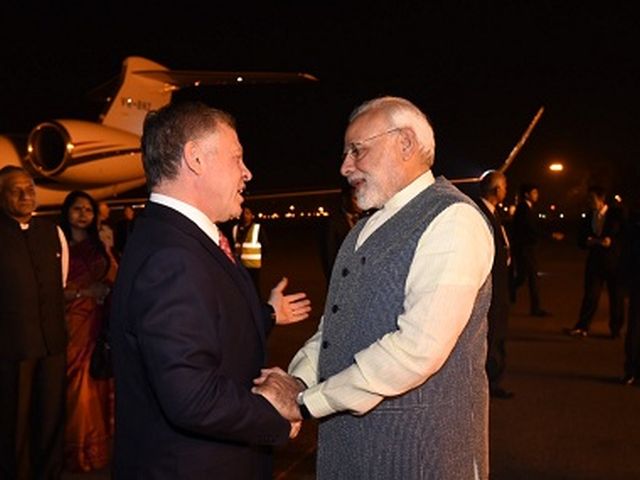
by admin | May 25, 2021 | News, Politics
 New Delhi : Stressing that India embraced many religions, Prime Minister Narendra Modi said on Thursday that every religion flourished in India.
New Delhi : Stressing that India embraced many religions, Prime Minister Narendra Modi said on Thursday that every religion flourished in India.
“Every religion found life here, it grew here. Every Indian is proud of this virtue, no matter what langusge he speaks, no matter what religion he practices,” the Prime Minister said at a conference on ‘Islamic Heritage: Promoting Understanding and Moderation’ in the presence of Jordan’s King Abdullah II.
“Be it Buddha or Mahatma Gandhi, the fragrance of peace and love has spread across the world from India. India has given the idea of ‘Vasudev Kutumbakam’ — which means that the whole world is our family. India found its identity in considering the people of this world as their family.
“We will be celebrating Holi tomorrow, there will be a celebration of Buddha Jayanti, that will be followed by the month of Ramzan — a symbol of the country’s unity and diversity.”
—IANS





